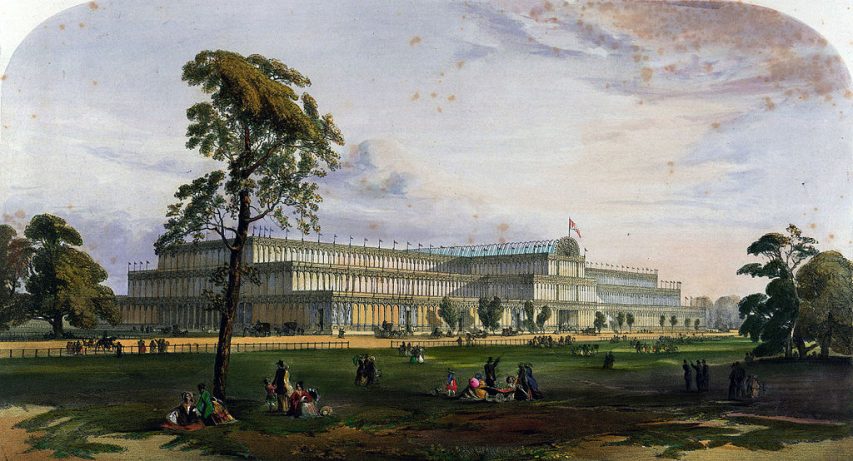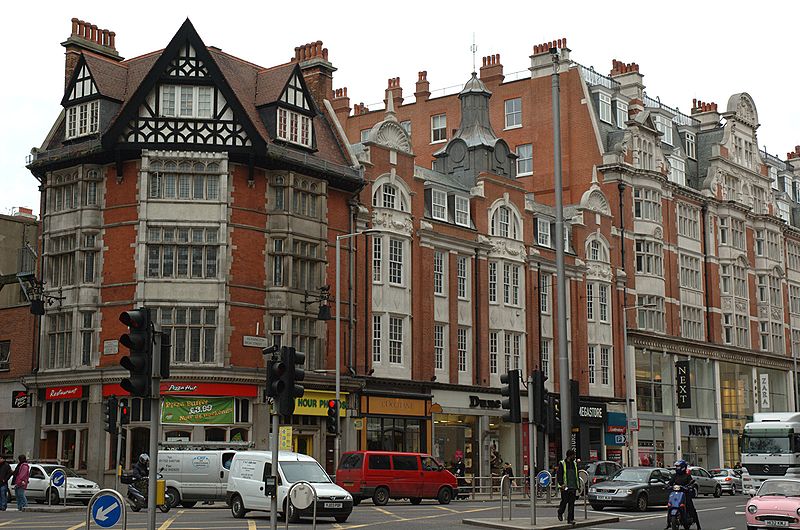Sabaton History
Published 21 May 2020The shadow of trench warfare is a long one. In fact the soldiers at the front did not just rely on their guns and grenades alone, but on a wartime industry to keep them fighting. Everything had to be produced in the millions. Not only rifles, cartridges and shells, but boots, helmets, spades and everything else that was used on a daily basis. The Great War was a war that thrived on a nation-wide war-economy, the likes of which had never been seen or tried before.
We would like to thank the World of Tanks team for their contribution and help with the video filming. If you’re not yet a World of Tanks player, join the game and get your hands on cool in-game stuff for free via the link: https://redir.wargaming.net/w7fwclmx/…
Support Sabaton History on Patreon: https://www.patreon.com/sabatonhistory
Listen to “Angels Calling” on the album Attero Dominatus:
CD: http://bit.ly/AtteroDominatusStore
Spotify: http://bit.ly/AtteroDominatusSpotify
Apple Music: http://bit.ly/AtteroDominatusAppleMusic
iTunes: http://bit.ly/AtteroDominatusiTunes
Amazon: http://bit.ly/AtteroDominatusAmzn
Google Play: http://bit.ly/AtteroDominatusGooglePlay
Drücken Sie zum Aktivieren des Screenreaders ⌘+Wahltaste+Z. Informationen zu Tastaturkürzeln erhalten Sie, indem Sie ⌘Schrägstrich drücken.Watch the Official Video of “Angels Calling” here:
https://www.youtube.com/watch?v=JyZ8w…Check out the trailer for Sabaton’s new album The Great War right here: https://www.youtube.com/watch?v=HCZP1…
Listen to Sabaton on Spotify: http://smarturl.it/SabatonSpotify
Official Sabaton Merchandise Shop: http://bit.ly/SabatonOfficialShopHosted by: Indy Neidell
Written by: Markus Linke and Indy Neidell
Directed by: Astrid Deinhard and Wieke Kapteijns
Produced by: Pär Sundström, Astrid Deinhard and Spartacus Olsson
Creative Producer: Joram Appel
Executive Producers: Pär Sundström, Joakim Broden, Tomas Sunmo, Indy Neidell, Astrid Deinhard, and Spartacus Olsson
Post-Production Director: Wieke Kapteijns
Edited by: Karolina Dołęga
Sound Editing by: Marek Kaminski
Maps by: Eastory – https://www.youtube.com/c/eastoryArchive by: Reuters/Screenocean https://www.screenocean.com
Music by Sabaton.Sources:
Imperial War Museum: (E(AUS) 1497),(Q 87945), (HU_91107), (Q 109611), (IWM Q 3001), (Q 69229), (Q 14945), (Q 5855), (Q 110355), (Q30009), (Q 9340), (Q 10450), (Q 70680)
Bundesarchive
National Archives NARA
Library of Scotland
Internet Archive Book Images
Bulgarian Archive State Agency
The icons from Noun Project by: Creative Mania, Chanut is Industries, Ben Davis, Vichanon Chaimsuk, Assyifa Art, chiccabubble, Nociconist, Vectors Marke, lastspark, faisal, Nun, Setyo Ari Wibowo, Mohamad Arif Prasetyo, Nibras@design,Creative Stall, Bruno Bosse, ghufronagustian, Karla Design,Gan Khoon Lay, Eucalyp, Anton, Marta Botter, Iconic, Daniel Turner, Naufal Hudallah, Phạm Thanh Lộc, Ruben Vh, Vectorstall, Icon Lauk, Mahmure Alp, Luke Anthony, Deemak Daksina, Sergey Krivoy, Andrejs Kirma, Rflor, Andrejs Kirma, Shovel by David, ProSymbols, Jake Dunham, noSimon Child, Wonmo Kang, Nubaia Karim Barsha, Nikita Kozin, Dolly Holmes, Collicon, Made by Made & Graphic Enginer
Flag of Spain recreated by HansenBCN and SanchoPanzaXXIAn OnLion Entertainment GmbH and Raging Beaver Publishing AB co-Production.
© Raging Beaver Publishing AB, 2019 – all rights reserved.
May 22, 2020
“Angels Calling” Pt. 2 – Guns, Gas and Steel – Sabaton History 068 [Official]
When raising tax rates reduces total tax revenue
In the Continental Telegraph, Tim Worstall explains that the US tax system is already drawing too much in tax and any hope of increasing the total revenue will hinge on reducing the tax rate:

“washdc040208-02” by carencey is licensed under CC BY-NC-SA 2.0
It is often stated that the rate [the Laffer Curve peak rate] discovered here is 75 to 80%. This is not so – that could be the rate if only we entirely and wholly changed the taxation system in a mass of highly undesirable ways. If we remain with roughly what we’ve got in structure and intent then the peak of the Laffer Curve is 54%. That is not income tax, that is taxes upon income. That means we add together all Federal and State taxes upon income, including “employer paid” portions of Social Security, Medicaid, special amounts for this and that and so on and on. Anyone even vaguely familiar with the US taxation system will note that top earners are, already in many states, paying this or more.
There is something else though. The Laffer Curve is not about taxes upon high earners. It is about taxes upon income. It’s true that there will be slight differences in what the peak rate on lower incomes should be, or what the peak of the curve is there. The income effect will be higher than the substitution at lower incomes than it is at higher. We don’t know how much so let’s just stick with what we’ve got – 54%.
At which point:
The U.S. has a plethora of federal and state tax and benefit programs, each with its own work incentives and disincentives. This paper uses the Fiscal Analyzer (TFA) to assess how these policies, in unison, impact work incentives. TFA is a life-cycle, consumption-smoothing program that incorporates household borrowing constraints and all major federal and state fiscal policies. We use TFA in conjunction with the 2016 Federal Reserve Survey of Consumer Finances to calculate Americans’ remaining lifetime marginal net tax rates. Our findings are striking. One in four low-wage workers face marginal net tax rates above 70 percent, effectively locking them into poverty.
This includes the withdrawal of welfare benefits as income rises – as it should – and so is compatible with the Universal Credit idea that the peak tax and withdrawal rate should be 60%. Or is it 66%?
As we can see that rate is hugely above the Laffer Curve peak. It should, therefore, be lower.
It’s possible to extend the taper. Withdraw benefits at slower rates as income rises. This is, however, hugely, vastlylily, expensive. So it’s not going to happen to any significant degree and if it does then it will be financed by reducing the overall amount of benefit being paid. Which would mean taking money off the truly low income in order to soften the blow to the marginally low income – not the way we want to be doing things.
The only other way to do this is to reduce the taxation of the income of those low income folks. This has been done, a bit, by the Trump tax reforms and the much larger personal deduction. A further bite could be taken by FICA taxation only applying to the income above the personal deduction, not from dollar $1 of income as now. In fact that would be the simplest manner of at least beginning to get to grips with this problem. FICA only starts at $12,000 a year or so. Or even, if all are to be sensible, starting income tax and FICA only at the poverty line, currently $14,000 or so a year for a single adult.
First War of Scottish Independence | 3 Minute History
QotD: “Scientific” racism
… the intellectualized racism that infected the West in the 19th century was the brainchild not of science but of the humanities: history, philology, classics, and mythology. In 1853, Arthur de Gobineau, a fiction writer and amateur historian, published his cockamamie theory that a race of virile white men, the Aryans, spilled out of an ancient homeland and spread a heroic warrior civilization across Eurasia, diverging into the Persians, Hittites, Homeric Greeks, and Vedic Hindus, and later into the Vikings, Goths, and other Germanic tribes. (The speck of reality in this story is that these tribes spoke languages that fell into a single family, Indo-European.) Everything went downhill when the Aryans interbred with inferior conquered peoples, diluting their greatness and causing them to degenerate into the effete, decadent, soulless, bourgeois, commercial cultures that the Romantics were always whingeing about. It was a small step to fuse this fairy tale with German Romantic nationalism and anti-Semitism: The Teutonic Volk were the heirs of the Aryans, the Jews a mongrel race of Asiatics. Gobineau’s ideas were eaten up by Richard Wagner (whose operas were held to be re-creations of the original Aryan myths) and by Wagner’s son-in-law Houston Stewart Chamberlain (a philosopher who wrote that Jews polluted Teutonic civilization with capitalism, liberal humanism, and sterile science). From them the ideas reached Hitler, who called Chamberlain his “spiritual father.”
Science played little role in this chain of influence. Pointedly, Gobineau, Chamberlain, and Hitler rejected Darwin’s theory of evolution, particularly the idea that all humans had gradually evolved from apes, which was incompatible with their Romantic theory of race and with the older folk and religious notions from which it had emerged. According to these widespread beliefs, races were separate species; they were fitted to civilizations with different levels of sophistication; and they would degenerate if they mixed. Darwin argued that humans are closely related members of a single species with a common ancestry, that all peoples have “savage” origins, that the mental capacities of all races are virtually the same, and that the races blend into one another with no harm from interbreeding. The University of Chicago historian Robert Richards, who traced Hitler’s influences, ended his book titled Was Hitler a Darwinian? (a common claim among creationists) with “The only reasonable answer to the question … is a very loud and unequivocal No.”
Steven Pinker, “The Intellectual War on Science”, Chronicle of Higher Education, 2018-02-13.
May 21, 2020
Make a budget backsaw AWESOME. Total upgrade!
Rex Krueger
Published 20 May 2020Make a $45 tenon saw perform like a premium tool in this complete rehab video.
More video and exclusive content: http://www.patreon.com/rexkrueger
Get the Spear and Jackson tenon saw from this video: https://amzn.to/2zykhs6
Get the FREE Saw Handle Printout: https://www.rexkrueger.com/store/free…
Plans, t-shirts, and hoodies: http://www.rexkrueger.com/storeSign up for Fabrication First, my FREE newsletter: http://eepurl.com/gRhEVT
Paul Sellers sharpening video: https://www.youtube.com/watch?v=UA5Di…
Saw Vise Build Video: https://www.youtube.com/watch?v=_e4rq…
Cut Smooth Curves with Flat Tools: https://www.youtube.com/watch?v=LX-0D…Tools and Materials in this Project (affiliate):
Spear and Jackson Tenon Saw: https://amzn.to/2zykhs6
Same Saw, 10 inches long: https://amzn.to/2T5h75Y
Crown Tenon Saw: https://amzn.to/3fM9uek
Digital Calipers: https://amzn.to/35YO4WK
Tack Hammer: https://amzn.to/35XSrBz
(I used this for removing the set. Not the exact one I use, but a quality tool.)
Saw File: https://amzn.to/2LuhxOV
(Not the exact one I use, but a good tool from a quality maker. Correct size for this saw.)
Saw Nuts: https://amzn.to/2T4hhKZ
Saw Nuts (different source): https://bit.ly/2Z4daSO
Super 77 Adhesive: https://amzn.to/2zymSCm
Dreadnaught Half-Round File: https://amzn.to/2Z504oi
Large Round File: https://amzn.to/2Z6hykb
Minwax English Chestnut Stain: https://amzn.to/2Z1iGpb
Clear Shellac: https://amzn.to/2AtgmNB
Paste Wax: https://amzn.to/3dW596PWood Work for Humans Tool List (affiliate):
Stanley 12-404 Handplane: https://amzn.to/2TjW5mo
Honing Guide: https://amzn.to/2TaJEZM
Green buffing compound: https://amzn.to/2XuUBE2
Cheap metal/plastic hammer for plane adjusting: https://amzn.to/2XyE7Ln
Spade Bits: https://amzn.to/2U5kvML
Metal File: https://amzn.to/2CM985y (I don’t own this one, but it looks good and gets good reviews. DOESN’T NEED A HANDLE)
My favorite file handles: https://amzn.to/2TPNPpr
Block Plane Iron (if you can’t find a used one): https://amzn.to/2I6V1vh
Stanley Marking Knife: https://amzn.to/2Ewrxo3
Mini-Hacksaw: https://amzn.to/2QlJR85
Blue Kreg measuring jig: https://amzn.to/2QTnKYd
Blue Handled Marples Chisels: https://amzn.to/2tVJARY
Suizan Dozuki Handsaw: https://amzn.to/3abRyXB
Vaughan Ryoba Handsaw: https://amzn.to/2GS96M0
Glue Dispenser Bottle: https://amzn.to/30ltwoB
Orange F Clamps: https://amzn.to/2u3tp4X
Blue Painters Tape: https://amzn.to/35V1Bgo
Round-head Protractor: https://amzn.to/37fJ6oz
5 Minute Epoxy: https://amzn.to/37lTfjK
Dewalt Panel Saw: https://amzn.to/2HJqGmOPlans, t-shirts, and hoodies: http://www.rexkrueger.com/store
Get my woodturning book: http://www.rexkrueger.com/book
Follow me on Instagram: @rexkrueger
The Milk Dud’s (final?) flip-flop
Walking political liability Andrew “The Milk Dud” Scheer managed to bring himself to the attention of the media yet again for his decision to backtrack on renouncing his American citizenship … did Justin need him to take the heat off for another Trudeau blunder?

Andrew Scheer, paid tool of Big Dairy and dual citizen of Canada and the United States, chugs some milk during a Press Gallery speech in 2017.
Screencapture from a CTV video uploaded to YouTube.
I don’t suppose Conservative Leader Andrew Scheer’s flip-flop on renouncing his U.S. citizenship will be of interest very long, but I have parting shots to take about it. In backtracking on his original intention to give up the United States of America, Scheer showed an awareness that there is at least one position in Canadian government, that of prime minister, which requires going the extra mile to avoid the appearance of divided or compromised allegiance. I am being careful not to say “loyalty,” which, unlike allegiance, might be regarded as a purely private matter.
It is a good thing that Scheer recognizes the importance of these issues. But he made a big deal about the disavowal being a “personal decision” during the 2019 election. What’s changed now, he says, is that he will never be prime minister. So he is now free to be an American, which, by definition, is the freest goldurn thing you can be.
But: “I’ll never be prime minister” seems like a hell of a thing for the leader of the Opposition, which Scheer still is until August at the earliest, to say. Our House of Commons is in a hung state. No party commands a majority. The Conservatives (who would want us to remember that they led in the 2019 popular vote) chose not to have an interim leader in Scheer’s place while permanent successors were sized up. The Liberals don’t have anything like a binding supply-and-confidence agreement with any other party. The country is in the grip of epidemic disease.
When the behind-the-scenes Liberal-friendly Quebec dairy folks selected Scheer as their preferred patsy to “lead” the “Conservative” party, they chose very well indeed. Scheer might as well be wearing a Washington Generals jersey from now on.
1949: Death and Sovereignty | The Indonesian War of Independence Part 5
TimeGhost History
Published 20 May 2020The Dutch reconquered most of the Indonesian cities on Java and Sumatra, but the Indonesian War of Independence continues as the international community grows tired of the Dutch attitude.
Join us on Patreon: https://www.patreon.com/TimeGhostHistory
Hosted by: Indy Neidell
Written by: Isabel Wilson and Joram Appel
Director: Astrid Deinhard
Producers: Astrid Deinhard and Spartacus Olsson
Executive Producers: Astrid Deinhard, Indy Neidell, Spartacus Olsson, Bodo Rittenauer
Creative Producer: Joram Appel
Post-Production Director: Wieke Kapteijns
Research by: Isabel Wilson and Joram Appel
Edited by: Karolina Dołęga
Maps: Ryan Weatherby
Sound design: Marek KamińskiColorizations:
Carlos Ortega Pereira (BlauColorizations) – https://www.instagram.com/blaucoloriz…Bibliography: https://bit.ly/IndoSources
Image Sources:
Nationaal Archief
Tropenmuseum, part of the National Museum of World Cultures
Journal of the Humanities and Social Sciences of Southeast Asia
Tukangpulas – https://www.instagram.com/tukangpulas…The icons from The Noun Project by Adrien Coquet
Archive by Screenocean/Reuters https://www.screenocean.com.
A TimeGhost chronological documentary produced by OnLion Entertainment GmbH.
From the comments:
TimeGhost History
1 day ago
We have seen two colonial offensives, two peace agreements, civil wars and multiple foreign interventions. And yet, 1949 is the most deadly year of the entire Indonesian War of Independence. And, without spoiling the episode, stuff doesn’t end in 1949. Indonesia will stay the stage of revolts, colonialism, civil war and ideological purges for decades to come. We won’t get to cover that in these series, as these are exclusively about the Indonesian War of Independence from 1945 to 1949. We might revisit the area in the future though. If you want to support that, and share in the decision of what series to make next, you can support us on www.patreon.com/timeghosthistory or https://timeghost.tv.
Cheers, Joram and Izzy
The Great Exhibition of 1851 also served (for some) as the 19th century equivalent of the “Missile Gap” controversy
In the latest edition of his Age of Invention newsletter, Anton Howes discusses the changing role of the British government and how the Great Exhibition was also useful as subtle domestic propaganda for a more active role for government in the British economy:

The Crystal Palace from the northeast during the Great Exhibition of 1851, image from the 1852 book Dickinsons’ comprehensive pictures of the Great Exhibition of 1851
Wikimedia Commons.
… a whole new opportunity for reform was provided by the Great Exhibition of 1851. As I explained in the previous newsletter, an international exhibition of industry functioned as an audit of the world’s industries. It, and its successors, the world’s fairs, gave some indication of how Britain stood relative to rival nations, especially France, Prussia, and the United States. And whereas some people saw the Great Exhibition as a clear mark of Britain’s superiority, for would-be reformers it was a chance to expose worrying weaknesses. Thus, Henry Cole and the other original organisers of the exhibition at the Society of Arts exacerbated fears of Britain’s impending decline, giving them an excuse to create the systems they desired.
They identified two areas of worry: science and design. Britain of course had many eminent scientists and artists — some of the best in the world — but other countries seemed to have become better at diffusing scientific training and superior taste throughout the workforce as a whole. Design skills were an issue because France appeared to be catching up with Britain when it came to the mechanisation of industry; if it caught up on machinery while maintaining its lead in fashion, then Britain would not be able to compete. And scientific training appeared more useful than ever, with the latest scientific advances “influencing production to an extent never before dreamt of”. Visitors to the Great Exhibition had marvelled at the recent inventions of artificial dyes, a method of processing beetroot sugar, and the latest improvements to photography and the electric telegraph. Thus, for Britain to maintain its lead, it would need to improve the education of its workers.
The reformers’ scare tactics worked. The aftermath of the Great Exhibition saw the creation of a government Department of Science and Art under the direction of Henry Cole, who in turn oversaw the agglomeration of various museums, design schools, and other cultural institutions to what is now the “Museum Mile” in South Kensington. (Curiously, the area was originally called Brompton, but when Cole opened a museum of design and industry there, he named it the South Kensington Museum. Kensington was a much more aristocratic area nearby, though it had no “south” at the time. The museum evolved, rather complicatedly, into what is now the Victoria & Albert Museum. But unlike so many top-down area re-brands, the name South Kensington stuck.)
And that was just the beginning. Cole and his allies then oversaw a dramatic expansion of the state into education, largely through the use of examinations. Although state-funding for education had initially centred on building new schools, getting any more involved was a highly contentious issue. Most schools were controlled and funded by religious organisations, but were split between the established Anglican church and dissenters. When the government first became involved in schools, it was thus bitterly opposed by many dissenters as they feared that their children might become indoctrinated to Anglicanism. And naturally, the government could not teach dissenting religions. Yet the proposed compromise of teaching no religion at all was unacceptable to both sides. Schools were crucial, the groups believed, to keeping religion alive.
So the utilitarians came up with a workaround. Rather than getting the state too involved directly in managing the schools themselves, it would instead influence the curriculum. By holding examinations, and then paying teachers based on the outcomes of the tests, they could incentivise the teaching of certain subjects and leave the schools free to teach whatever religious beliefs they pleased. Indeed, by diverting more and more time towards teaching particular subjects, the reformers saw it as a secularising blow “against parsonic influence”. The tactic was initially applied to adult education. The Society of Arts would first trial out examinations without payments, to test their viability. Then Cole would have his department take over the examinations, first for drawing, and later for science, using his budget to fund payment-by-results. The effects were dramatic. The Society’s relatively popular examinations in chemistry, for example, rarely had more than a hundred candidates a year. But when the department instituted its payments, it soon drew in thousands. By 1862, when the government wanted to improve the teaching of reading, writing, and arithmetic in schools, they adopted Cole’s suggestion that they also use payment-by-results.
Tank Chats #70 Sherman M4A4 | The Tank Museum
The Tank Museum
Published 23 Mar 2019In Tank Chat #70, David Fletcher talks through the Sherman M4A4. The M4A4 is a relatively new addition to The Tank Museum, which is on long term loan.
Used and loved by the British, find out what makes this tank different from other types of Sherman in The Tank Museum.
Support the work of The Tank Museum on Patreon: ► https://www.patreon.com/tankmuseum
Visit The Tank Museum SHOP: ► https://tankmuseumshop.org/
Twitter: ► https://twitter.com/TankMuseum
Tiger Tank Blog: ► http://blog.tiger-tank.com/
Tank 100 First World War Centenary Blog: ► http://tank100.com/ #tankmuseum #tanks #tankchats
QotD: Gullibility and belief in conspiracy theories
There are several cognitive processes going on here:
Anecdotal thinking vs. statistical thinking. We evolved to do the former so it is natural; science teaches us to do the latter, and it is unnatural. What is natural is to connect two temporally-close events as causally connected. A happens and then B happens. So they must be causally connected, right? I vaccinated my child and shortly after he was diagnosed with autism. They must be connected, right? Not necessarily (and in this case definitely not).
Patternicity: the tendency to find meaningful patterns in both meaningful and meaningless noise. If you already believe in UFOs or Bigfoot, strange lights in the sky or shadowy figures in the trees are interpreted as a meaningful pattern that supports the belief. Often such patterns carry an additional component that I call …
Agenticity: the tendency to infuse those patterns with intentional agents who act in the world. From conspiracies to ghosts, angels, demons, and gods, we tend to impute agency to the goings on around us, as if there’s someone/something out there pulling the strings.
Confirmation Bias: we look for and find confirming evidence for what we already believe and ignore or rationalize away disconfirming evidence. Once you believe that, say, “the Jews” are running the world, or that the U.S. government (or the Bush administration in the case of the 9/11 truthers) is involved in vast global cabals to control oil, it is easy to interpret daily news stories about the goings on of governments in the light of the conspiracy theory in question. Every bit of minutia becomes pregnant with meaning. It’s not chance or contingency, it’s a Vast Right Wing (or Left Wing) Conspiracy!
Michael Shermer, interviewed by Claire Lehmann, “The Skeptical Optimist: Interview with Michael Shermer”, Quillette, 2018-02-24.
May 20, 2020
Roald Dahl – Pilot, Seducer and Author – WW2 Biography Special
World War Two
Published 19 May 2020Roald Dahl is not just a beloved author, he is also a wartime adventurer. He saw plenty of action in North Africa and Greece, where he got the inspiration for many of his work to come.
Join us on Patreon: https://www.patreon.com/TimeGhostHistory
Or join The TimeGhost Army directly at: https://timeghost.tvFollow WW2 day by day on Instagram @World_war_two_realtime https://www.instagram.com/world_war_t…
Between 2 Wars: https://www.youtube.com/playlist?list…
Source list: http://bit.ly/WW2sourcesHosted by: Indy Neidell
Written by: Isabel Wilson
Director: Astrid Deinhard
Producers: Astrid Deinhard and Spartacus Olsson
Executive Producers: Astrid Deinhard, Indy Neidell, Spartacus Olsson, Bodo Rittenauer
Creative Producer: Joram Appel
Post-Production Director: Wieke Kapteijns
Research by: Isabel Wilson
Edited by: Mikołaj Cackowski
Sound design: Marek KamińskiColorizations by:
Carlos Ortega Pereira, BlauColorizations, https://www.instagram.com/blaucoloriz…Sources:
IWM K 8588, CH 2377, ZZZ 11729, CM 1725, CM 354, CM 358, CM 43, CH 13555, CM 131, CH 1500, CH 1431, CM 2527, CM 1353
Portrait of Roald Dahl, courtesy Royal Air Force Benevolent Fund
“Shot Down over Libya”, courtesy The Saturday Evening Post
Portrait of Walt Disney, courtesy of Disney Archive
Bundesarchiv
USHMMJohannes Bornlof – “The Inspector 4”
Phoenix Tail – “At the Front”
Fabien Tell – “Last Point of Safe Return”
Johannes Bornlof – “Death And Glory 2”
Reynard Seidel – “Deflection”
Johannes Bornlof – “Deviation In Time”Archive by Screenocean/Reuters https://www.screenocean.com.
A TimeGhost chronological documentary produced by OnLion Entertainment GmbH.
Bidding farewell to “the dumbest management fad of all time”
Jessica Stillman hails one positive likely outcome of the Wuhan Coronavirus epidemic … the end of the “open office plan”:
My Inc.com colleague Geoffrey James memorably called open-plan offices “the dumbest management fad of all time.” And with good reason. Not only do many workers loathe the interruption-prone, privacy-free spaces, but science shows they don’t even achieve their stated aim of fostering greater collaboration.
The current pandemic is a heart-breaking tragedy of epic proportions, but according to experts, it might at least have one small silver lining. Maybe, just maybe it will spell the end of the hated open-plan office.
[…]
All this means employers will need to find creative solutions to get work done even though far fewer people can safely fit in the same space. Continued work-from-home arrangements will certainly be part of the answer, but creative reconfiguring of your physical office is likely to be necessary too.
That’s a headache for facilities managers and bosses, but better news for open-plan office haters. In a post-coronavirus world, you will almost certainly have more privacy at work. In trade for that personal space, however, expect to submit to measures like temperature checks, half-empty break rooms, and a whole lot of hand sanitizer.
ZB26: The Best of the Light Machine Guns
Forgotten Weapons
Published 26 Oct 2017Sold for $34,500 (transferrable).
The ZB-26 stands as one of the best magazine-fed light machine guns developed during the 1920s and 30s – it was a very popular gun for small military forces and many countries which did not directly buy it were strongly influenced by it. The Japanese Nambu Type 96 and 99 were heavily based on the ZB, and the British Bren was a direct evolution licensed from Brno.
The design dates back to 1921, when the Czech government began searching for a modern light machine gun. They tested pretty much all the guns available on the market at the time, and also solicited guns from Czechoslovak designers. Brothers Vaclav and Emmanuel Holek submitted their I-23 light machine gun, which would become the ZB-26 (LK vizor 26 in Czech terminology) and become the official Czechoslovak light machine gun as well as a popular commercial export for the ZB factory. More than 120,000 were made in several different calibers and sold to 24 countries between 1926 and 1939.
When the Germans occupied Czechoslovakia, they seized a huge number of these guns both from the military and guns still in the factory. This particular one was part of a Spanish purchase contract, but was completed under the oversight of Heinrich Krieghoff and supplied to German forces.
Mechanically, the ZB-26 uses a tilting bolt and a long stroke gas piston, in a combination that would be copied in many later designs. It is robust, accurate, controllable, and handy – a truly excellent all-around light machine gun.
http://www.patreon.com/ForgottenWeapons
Cool Forgotten Weapons merch! http://shop.bbtv.com/collections/forg…
If you enjoy Forgotten Weapons, check out its sister channel, InRangeTV! http://www.youtube.com/InRangeTVShow
QotD: Behavioural economics, aka the applied theory of bossing people around
Once [Richard] Thaler has established that you are in myriad ways irrational it’s much easier to argue, as he has, vigorously — in his academic research, in popular books, and now in a column for The New York Times — that you are too stupid to be treated as a free adult. You need, in the coinage of Thaler’s book, co-authored with the law professor and Obama adviser Cass Sunstein, to be “nudged.” Thaler and Sunstein call it “paternalistic libertarianism.”
Adam Smith spoke of “the man of system” who “seems to imagine that he can arrange the different members of a great society with as much ease as the hand arranges the different pieces upon a chess-board.” Thaler and his benevolent friends are men, and some few women, of system. They hate the Chicago School, have never heard of the Austrian School, dismiss spontaneous order, and favor bossing people around — for their own good, understand. Employing the third most unbelievable sentence in English (the other two are “The check is in the mail” and “Of course I’ll respect you in the morning”), they declare cheerily, “We’re from the government and we’re here to help.”
We humans face a choice of treating people as children or as adults. A liberal society, Smith’s “liberal plan of [social] equality, [economic] liberty, and [legal] justice,” treats adults as adults. The principle of an illiberal society, from Thaler’s to the much worse kind, is that you are to be corrected not through respectful dialog that treats you as an equal, but by compulsion or trickery, which treats you like a toddler about to walk into traffic.
Wikipedia lists fully 257 cognitive biases. In the category of decision-making biases alone there are anchoring, the availability heuristic, the bandwagon effect, the baseline fallacy, choice-supportive bias, confirmation bias, belief-revision conservatism, courtesy bias, and on and on. According to the psychologists, it’s a miracle you can get across the street.
For Thaler, every one of the biases is a reason not to trust people to make their own choices about money. It’s an old routine in economics. Since 1848, one expert after another has set up shop finding “imperfections” in the market economy that Smith and Mill and Bastiat had come to understand as a pretty good system for supporting human flourishing.
Dierdre McCloskey, “The Applied Theory of Bossing People Around”, Reason, 2018-02-11.
May 19, 2020
Some changes to the working world … when the world gets back to working
Sean Gabb has some thoughts on the post-lockdown return so … well, not normal, but as the economy reaches toward a new working equilibrium:

Kensington High Street at the intersection with Kensington Church Street. Kensington, London, England.
Photo by Ghouston via Wikimedia Commons.
The Coronavirus and its aftermath of lingering paranoia are the perfect excuse. Decentralisation and homeworking must be done. They must be done for the duration. They must be continued after that to maintain social distancing. No one will think ill of Barclays and WPP for taking the leap. No one will blame them for taking the leap in a way that involves a few deviations from course and a less than elegant landing. A year from now, these organisations will be making measurably larger profits than they would be otherwise. The mistakes will have been ignored.
And other organisations will follow. Whether the present crash will bring on a depression shaped like a V or an L, there is no doubt that, even if slowly at first, the wheels of commerce will continue turning. But they will be turning on different rails. As with any change of course, there will be winners and losers. I have already discussed how I can expect to be among the winners. I will leave that as said for the other winners — these being anyone who can find a market for doing from home what was previously required by custom and lack of imagination to be done somewhere else. I will instead mention the losers.
Most obvious among these will be anyone involved in commercial property. Landlords will find themselves with many more square feet to fill than prospective tenants want to fill. Rental and freehold values will crumble. Bearing in mind how much debt is carried by commercial landlords, there will be some interesting business failures in the next few years. Then there are the ancillary sectors — property management companies, commercial estate agents, maintenance companies. These employ swarms of architects and surveyors and lawyers and negotiators, of builders, plumbers, electricians, of drivers and cleaners. If the humbler workers will eventually find other markets, many with degrees and professional qualifications can look to a future of straitened circumstances.
The lush residential estates in and about Central London will follow. I think particularly of the aristocratic residential holdings in Kensington. Houses here go for tens of thousands a week to senior bank workers from abroad. If the City and Canary Wharf are emptied out, who needs to live in a place like Kensington? It has poor Underground connections. It is close by places like Grenfell Tower. Its residents keep predators at bay only by heavy investment of their own in security and by suspecting every knock on the door and every sound in the night. Many of the shops and eateries that make its High Street an enjoyable place to be will not reopen. Those that do reopen will be hobbled by continuing formal and informal rules on social distancing.
As a result, restaurants and pubs and coffee bars will begin to disappear. All but a few of these were barely making normal profit before they were closed last month. So few are in liquidation as yet only because so few petitions have been lodged in the courts. Most of them will now be surplus to requirement. The same can be said of hotels. Speaking for myself, I used to visit Cambridge twice a year on examinations business. I was always put up there for a couple of nights. I shall now do from home all that I did in Cambridge. I doubt I am alone. Zoom will destroy business travel. In the same way, bigger televisions plus continued social distancing will finish off the theatres and cinemas — also in decline before last month.











